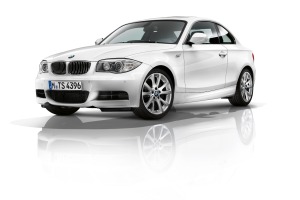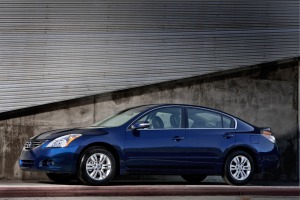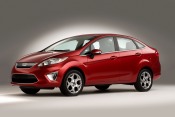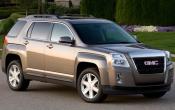- Save |
- Email |
- RSS |
- Newsletter
What You Should Know Before Buying an SUV
SUV Buying Guide | What You Should Know Before Buying an SUV | View Other Buying Guides
Size/Market Segment
Sport-utility vehicles are generally classified into three groups: compact, midsize and full-size — though the range of vehicles within each group varies widely. As you move up in size, you also move up in engine power, towing ability, passenger room and price. There are luxury models in each of the groups.
Car-Based vs. Truck-Based
Car-based SUVs (most typically known as crossovers) generally provide sharper handling, better fuel economy, a more comfortable ride and, in some cases, more interior room. Truck-based sport-utility vehicles are able to tow more weight, are more capable off-road and are generally sturdier all around due to their truck-derived hardware.
Price
Compact SUVs are the most affordable, with prices for base models starting at less than $20,000. Midsize and full-size sport-utility vehicles vary greatly, with base models starting in the mid-$20Ks and going all the way up to the mid-$40Ks. Luxury SUVs start around $32,000 and top out at more than $100,000.
Engine/Fuel Economy
Compact SUVs offer both four- and six-cylinder engines. Midsize sport-utes typically come standard with six-cylinder engines, but V8s are sometimes options. Some midsize models are now getting turbocharged four-cylinders for better fuel economy. All full-size SUVs use V8 engines. The most economical four-cylinder compact SUVs can achieve combined mileage figures in the low-to-mid 20s, while most six-cylinder sport-utes average in the upper teens (though the handful of gas-electric hybrid models do much better than that). Full-size vehicles generally get between 12 and 20 mpg.
Safety
Family shoppers should check the availability of features like antilock brakes, front-seat side airbags, full-length side curtain airbags and stability control. Features like rearview cameras, parking sensors and knee airbags are becoming increasingly available on non-luxury sedans, while premium brands are utilizing high-tech electronics to warn inattentive drivers of blind-spot intrusion and impending collisions. One thing to keep in mind, though, is that even with all of today's technology, the vast majority of SUVs still doesn't stop or handle as well as cars. Shoppers should also be aware of crash-test scores, but it should be noted that the National Highway Traffic Safety Administration adopted more strenuous testing procedures for 2011 making the ratings of recently tested models incomparable to those tested in the past.
Luxury Features/Convenience
Luxuries like automatic climate control, heated seats, iPod interfaces, navigation systems, keyless start systems and Bluetooth capability can often be found in non-luxury SUVs. Look for them as you shop. Regardless of vehicle size, keep an eye open for family-friendly features like rear-seat entertainment systems, flat-folding third-row seats, special storage bins and rear seats that slide and/or recline.
Passenger Capacity/Interior Space
All but a few SUVs are designed to carry at least five passengers. Most compacts provide enough rear legroom for full-size adults, while several offer fore-aft adjustments to extend either passenger space or cargo capacity. The same goes for larger SUVs, but these wider vehicles are more likely to fit three adults across. Many SUVs now offer the option of adding a third-row seat for additional passenger capacity. All in the compact category and most of the midsizers are best suited for children, but full-size models can fit full-size adults.
Cargo Capacity
All sport-utes allow you to fold or remove the rear seats for more cargo capacity, though the latter is obviously less appealing. Compact sport-utes top out at about 70 cubic feet of capacity, while midsize SUVs can expand to as much as 100 cubic feet. Full-size SUVs offer cargo areas in excess of 100 cubic feet.
2WD/4WD/AWD
Two-wheel drive means that only the front or rear wheels provide power to the vehicle. Four-wheel-drive vehicles allow the driver to select between two- and four-wheel drive, and provide low-range gearing for off-roading. All-wheel-drive vehicles automatically distribute power in varying degrees to the wheels with the most traction. In general, consumers should only pay extra for AWD if they regularly drive in snow or otherwise slippery conditions. Keep in mind that the additional weight of AWD mechanicals often results in lower fuel economy.
Operating Costs
Since compact SUVs are generally smaller, lighter and have less-complex four-wheel-drive systems, their maintenance and fuel costs are generally lower. With higher sticker prices and larger engines, midsize and full-size sport-utes generally get worse mileage and are more expensive to insure. This is especially true of truck-based models.
More Information About SUVs
Advertisement
Advertisement




